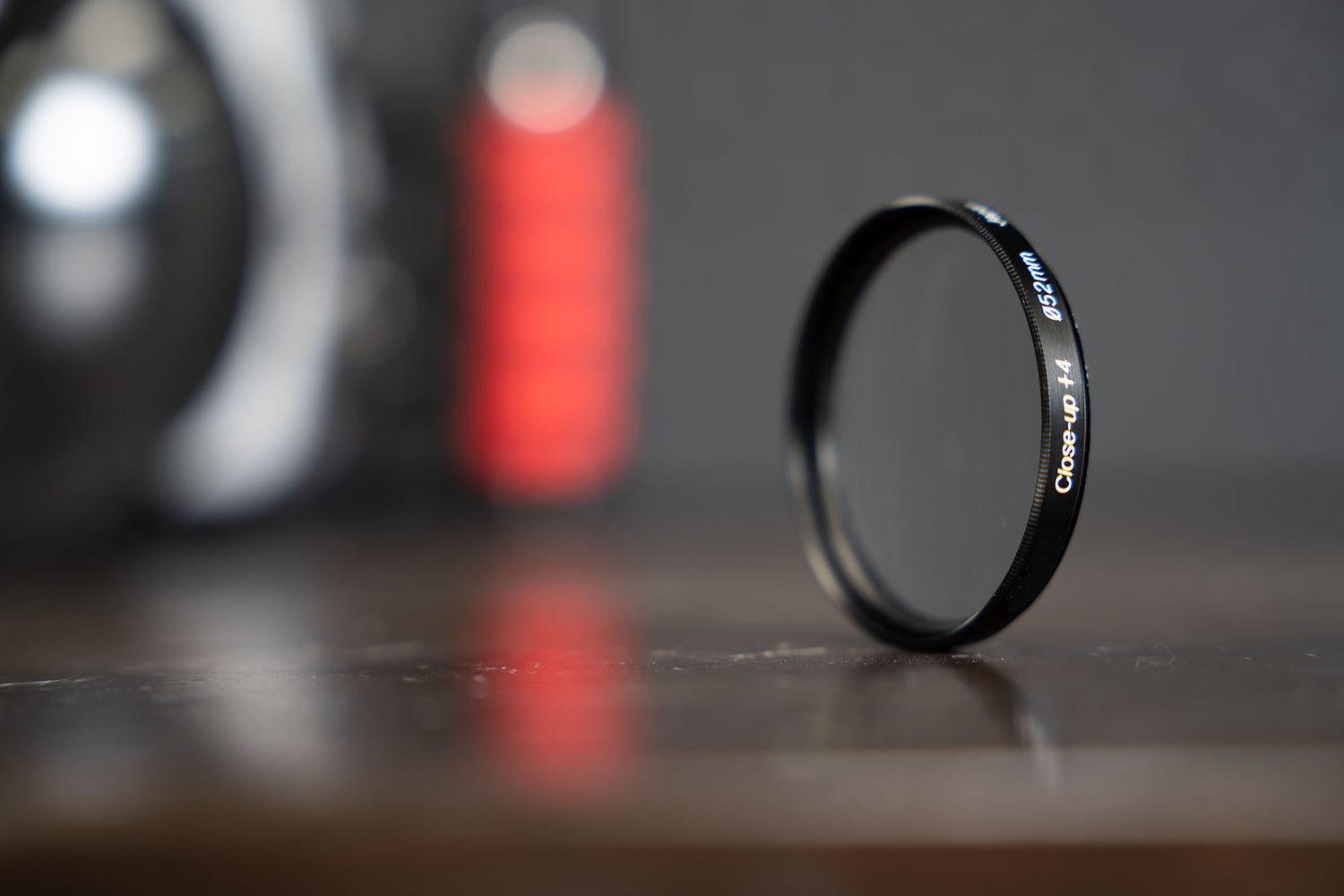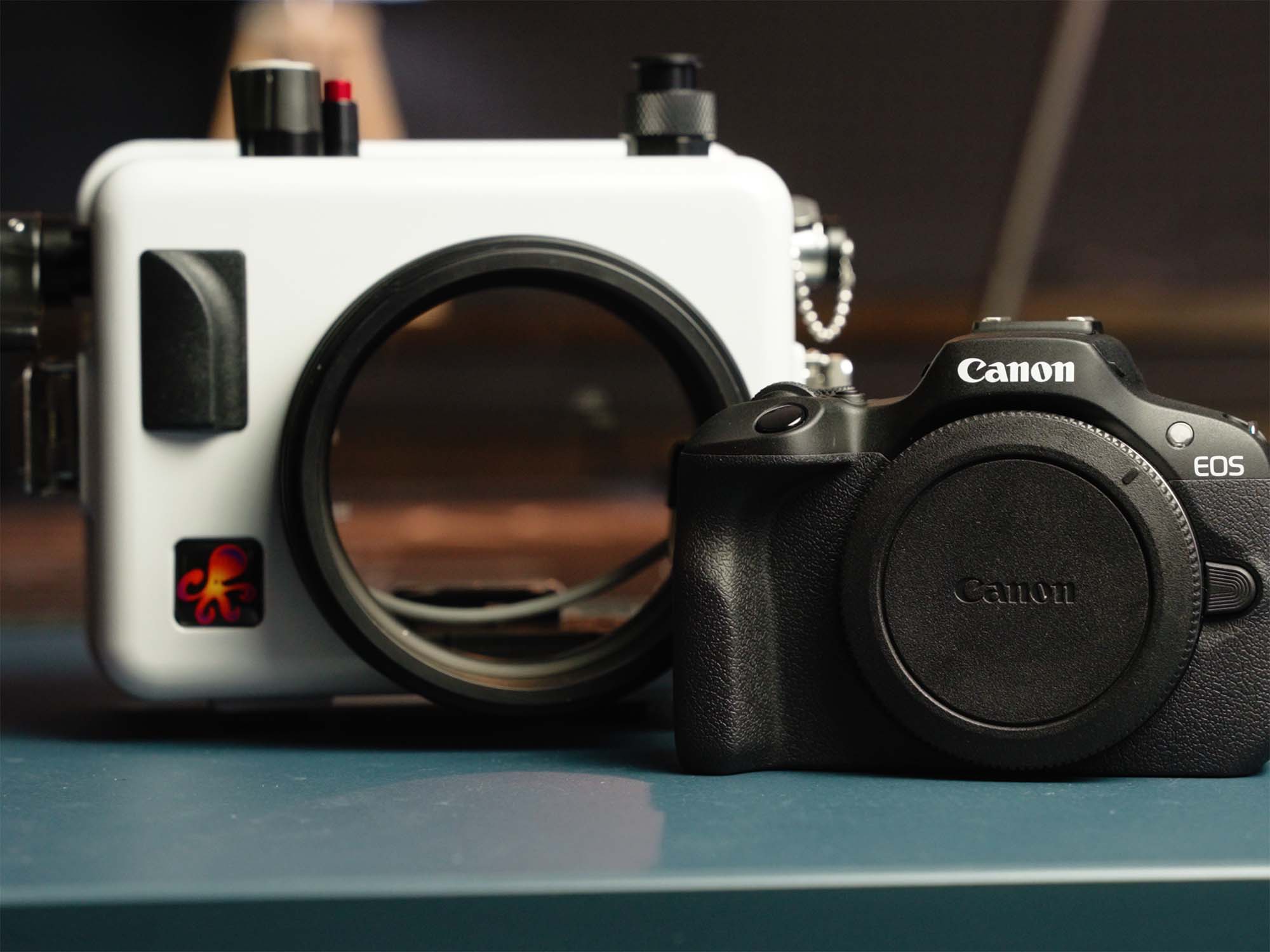There are a wide variety of lens and port combinations that you can take underwater. It can get confusing. The good news is, we have test fit hundreds of lenses from all different manufacturers to determine the optimum solution for each application.
You can find these recommendations on our Lens Port Charts – just make sure you’re looking at the right one for the port mount on your housing. If you’re not sure which type of housing you have, work your way backwards by looking up the camera model on our website. Each housing webpage contains a direct link to the appropriate port chart. The name of the housing also indicates the type of port system (200DL, 200FL, 200DLM/B, etc.):

| DL | Dry Lock found on most of our full frame mirrorless and DSLR housings |
| DLM | Dry Lock Micro for compact mirrorless and compact DSLR cameras |
| FL | Four Lock which was used on our legacy DSLR housings |
There are multiple designations of DLM port charts (/A, /B, /C, /D) due to differences in the positioning of the camera's lens mount in relation to the housing's port. Make sure to refer to the right one!
Once you find the correct port chart, you will often find multiple options for the same lens. Option # 1 is our recommended choice for the best combination of optical quality and versatility. Sometimes the additional options will be smaller and lighter, or more affordable. You can balance the advantages of each choice against your photographic needs.

Advantages to Using a Dome
Wide angle zoom lenses are almost always used behind a dome port underwater. There are several key advantages to using a dome port:
- Eliminate vignetting. Vignetting can range from dark shadows in the corners of the image to a complete port hole effect. Flat ports are more likely to vignette at wide angle focal lengths.
- Get a wider field of view. A dome port has no magnifying effect underwater. You can take advantage of the native field of view of your lens. In comparison, a flat port magnifies everything to look 25% larger underwater. This refraction of light through a flat port reduces your angle of coverage for a significantly more narrow view.
- Shoot split shots. There’s only one way to capture those incredible shots where the lens looks half-in and half-out of the water. And that’s by using a big dome port to smooth out the surface and create a clean waterline.
- Easy to handle. Ikelite dome ports are the lightest on the market and easy to maneuver underwater. A dome port will offset the negative buoyancy of your camera body in the housing creating a more neutral system.
- Affordable. There are a lot of really expensive ways to take photos underwater. A good lens (we prefer a fisheye) behind a dome port is the most affordable and versatile way to get into wide angle underwater photography.
The Virtual Image
Dome ports bend the light in an unusual way underwater. Imagine leaning over and finding your reflection in the surface of the water. There is a clear image of your likeness. But it’s not your Little Mermaid twin swimming around down there. It’s a virtual image created when the light rays travel through the water.
A similar thing happens when you take your lens underwater behind a dome. Your camera now sees a virtual image created as the light rays pass from the water into air through the dome. The image is at a fixed location in relation to the camera sensor – about 12” (30.5 cm) away – regardless of the distance of your subject.

From your camera's viewpoint, a dome port creates a virtual image of the subject about 12" (30.48 cm) from the sensor plane. This is what the lens needs to focus on.
+4 Diopter Required
The virtual image is the reason why the minimum focus of your lens must be 12” (30.5 cm) or less to focus behind a dome port underwater. Not all lenses are capable of this.
But we underwater photographers have a little trick up our sleeves. We can basically put a set of bifocal glasses on our lens in the form of a +4 close up lens, also called a "diopter." Like your drugstore cheaters, diopters come in various strengths like +1, +2, +4, etc. A diopter changes the focus distance of your lens to a fixed value. And the new focus distance is independent of the lens you put it on. The focus length of a +4 diopter is 9.8" (250mm) which happens to hit the sweet spot when shooting behind a dome port underwater.
How to Buy a +4 Diopter
You can buy a diopter from your local camera store or a larger online retailer like B&H Photo. You will need to know the filter size of your lens before you go to purchase a diopter (i.e. 55mm, 77mm, etc). Most lenses have the diameter size printed on the front preceded by the ø symbol.
Diopters are most commonly sold in kits from manufacturers like Tiffen, Hoya, and Vivitar. You can often find a 3-piece set for less than $20, or a single diopter costing over twice that much. We find that inexpensive diopters like those from Vivitar are perfectly adequate for our purposes underwater.

You will need to purchase the correct strength of diopter (+4) and the correct thread size (55mm, 77mm, etc). A diopter is also called a close-up lens.
Drawbacks of Shooting with a Diopter
As usual, the cure does come with a cost. The biggest drawback to shooting with a diopter is the loss of the ability to focus at infinity. Underwater it doesn’t matter – you’re always shooting the virtual image right in front of the dome port. But you won’t be able to shoot above the surface of the water. So no split shots, surf photography, or topside selfies.
If shooting at and above the surface of the water is important to you, we suggest choosing a fisheye lens or a rectilinear lens that can focus closely at all points in its zoom range.
Your camera's focus will operate totally normally once you get underwater with the correct lens, diopter, and dome port combination. Adding a +4 diopter does not reduce the effective angle of coverage or introduce any significant aberrations. You can focus on subjects at any distance underwater. Just keep in mind that water significantly reduces visibility. Even the clearest water is like shooting on a foggy day. Objects beyond 5-10' (1.5-3 meters) away from you can appear slightly out of focus regardless of what lens you're shooting.

A lens with +4 diopter attached will no longer be able to focus at infinity above the surface of the water. If shooting at or above the surface is important to you, choose a zoom lens with native close focus capabilities throughout its zoom range.
Telephoto Zoom Lenses
It’s important to note that a zoom lens can have a short minimum focus distance at it’s widest angle setting, and a significantly longer minimum focus distance in the macro range.
For example the Canon RF-S 18-150mm lens focuses down to 6.7” (17 cm) at 18mm. At 150mm the minimum focus distance increases to 17.76” (45 cm). So when shooting this behind a dome port without a diopter attached, wide angle images will look sharp but the lens will not be able to focus on a macro subject.
Edge Sharpness with a Dome Port
An interesting point is that the new virtual image created by your dome port is also curved. Smaller diameter domes (4" and 6") create curvier virtual images. Larger diameter domes (8" and above) create flatter virtual images. This creates a new depth of field problem. The edges of the image now look closer to your camera than the center. This results in a softness in focus. The effect is worsened at wide apertures (as opposed to smaller ones), when shooting with shorter ports (as opposed to longer ones), and when shooting with rectilinear lenses (as opposed to fisheye).
Using a diopter can improve edge sharpness on rectilinear lenses that are natively capable of focusing on the dome’s virtual image. Try adding a +2 diopter to the front of your lens to see if you prefer the overall focus.
Regardless of the lens, shooting at smaller apertures – generally f/8 and above – will ensure good sharpness across your image.

If edge sharpness is important to your composition, shooting at f/8 and above is a good rule of thumb. That's why we say "F/8 and be there."
External Diopters for Macro Photography
We’ve been covering the use of diopters for wide angle, zoom, telephoto, and portrait lenses. Another side of underwater optics are the ‘wet’ type which are added to the front of your port rather than the front of your lens. These external close-up lenses are intended for macro shooters. If you want to get into super macro, adding a 67mm threaded lens to the front of a flat port creates an interesting challenge.
Be aware that increasing strengths of diopters will reduce your working distance (the distance between you and the subject). If you add a +15 diopter, your subject will have to be very close and even the tiniest subjects will fill up most of the frame. Weaker diopters like +5, +6, and +7 have a longer working distance. You don't have to get right up onto your subject. For this reason, close-up lenses in the +5 to +10 range have an easier learning curve and will be less frustrating to start out with.
Conclusion
Diopters are necessary to use certain lenses behind a dome port underwater. We tend to favor lenses that have close focusing capabilities throughout their entire zoom range. If a new lens is outside of your budget, adding a +4 diopter can be an affordable and effective way to take your lens underwater.
If you’re looking for a lens recommendation, reach out to us and let us know what camera model you’re shooting and what type of underwater photography you’re into. We’re always here if you have questions about equipment, underwater photography, diving with a camera, or anything that relates to your camera in the water.
 Jean Rydberg, daughter of Ike Brigham, became President & CEO of Ikelite in 2006. Prior to that, she wisely pursued a degree in Astronomy & Astrophysics to prepare herself for the challenges of running a technology-driven manufacturing business with global distribution. Jean fully embraces the need to travel outside of her hometown of Indianapolis to experience good diving. She believes that any camera is capable of amazing results in the right hands, and anyone can become a great photographer given the right advice. When she's not working she's spending time with her husband, cats, and two daughters (though not necessarily in that order).
Jean Rydberg, daughter of Ike Brigham, became President & CEO of Ikelite in 2006. Prior to that, she wisely pursued a degree in Astronomy & Astrophysics to prepare herself for the challenges of running a technology-driven manufacturing business with global distribution. Jean fully embraces the need to travel outside of her hometown of Indianapolis to experience good diving. She believes that any camera is capable of amazing results in the right hands, and anyone can become a great photographer given the right advice. When she's not working she's spending time with her husband, cats, and two daughters (though not necessarily in that order).
Additional Reading
Why You Need a Fisheye Lens Underwater
When to Use a Compact 8" Dome Port Underwater
5 Situations Where You Need a Strobe Underwater [VIDEO]
My Must Have Underwater Housing Accessory // Cable Top Handle Grip [VIDEO]
The Best Canon RF-Mount Lenses for DLM Underwater Housings












![Nikon Z8 Underwater Housing Features & First Impressions [VIDEO]](http://www.ikelite.com/cdn/shop/articles/nikon-z8-ikelite-underwater-housing-first-impressions.jpg?v=1687484024&width=2560)
